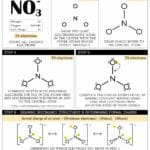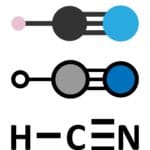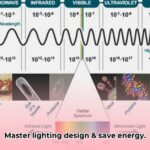Photocells, also known as photoresistors or light-dependent resistors (LDRs), are crucial components in a wide range of technological applications. They function as light-sensitive variable resistors, changing their electrical resistance in response to variations in light intensity. This comprehensive guide explores the functionality, types, applications, and implementation of photocells, providing valuable insights for both novice users and seasoned professionals.
Understanding Photocell Functionality: From Photons to Resistance
Photocells operate on the principle of photoconductivity, where the absorption of light alters a material’s electrical conductivity. When light strikes the photocell, photons transfer energy to the material’s electrons, exciting them to a higher energy level. These energized electrons become more mobile, increasing the material’s conductivity and thus decreasing its resistance. Conversely, in the absence of light, fewer electrons are energized, resulting in lower conductivity and higher resistance. This dynamic relationship between light intensity and resistance forms the core of photocell operation. This principle, seemingly simple, underpins a vast array of applications, from basic light sensors to complex optical communication systems.
Types of Photocells and Their Characteristics: Choosing the Right Tool for the Job
A variety of materials exhibit photoconductivity, leading to diverse photocell types, each with its own strengths and weaknesses:
| Material | Sensitivity to Visible Light | Response Speed | Cost | Toxicity Concerns | Long-Term Stability | Spectral Response |
|---|---|---|---|---|---|---|
| Cadmium Sulfide (CdS) | Excellent | Relatively Slow (ms) | Low | Moderate | Susceptible to moisture and temperature | Broad, peaks in green |
| Cadmium Selenide (CdSe) | Excellent | Faster than CdS (µs) | Moderate | Moderate | Similar to CdS | Broad, peaks in red |
| Silicon | High | Very Fast (ns) | Moderate | Low | Generally Stable | Broad, across visible and near-infrared |
| Gallium Arsenide (GaAs) | Very High (Specific Wavelengths) | Very Fast (ns) | High | Low | Generally Stable | Tunable to specific wavelengths |
| Lead Sulfide (PbS) | High (Infrared) | Moderate | Moderate | High | Good | Peaks in near-infrared |
| Indium Antimonide (InSb) | Very High (Infrared) | Very Fast | High | Moderate | Good | Peaks in mid-infrared |
| Organic Materials | Variable | Varies | Moderate to Low | Varies | Sensitivity to UV light, oxidation, and temperature | Tunable, often in visible |
Selecting the appropriate photocell requires careful consideration of various factors, including sensitivity, response time, cost, toxicity, long-term stability, and spectral response. While CdS and CdSe offer excellent visible light sensitivity at a lower cost, they have slower response times and stability issues. Silicon provides a balance of speed, sensitivity, and stability, making it suitable for many applications. GaAs and InSb excel in speed and sensitivity, especially in low-light and infrared applications, but come at a premium cost. Emerging organic photocells offer potential advantages in flexibility and transparency but still face challenges in long-term stability and performance. Furthermore, the specific spectral response of a photocell, meaning its sensitivity to different wavelengths of light, is crucial for applications targeting specific light sources. This highlights the complexity of photocell selection and the importance of understanding the nuances of each material.
Applications of Photocells: Illuminating Diverse Fields
The light-sensitive nature of photocells makes them indispensable in a wide array of applications:
- Lighting Controls: Automatic streetlights, dimming interior lights based on ambient light levels, and solar-powered garden lights are prime examples of photocell integration in everyday life. The ability to automatically regulate lighting based on available natural light contributes significantly to energy efficiency and cost savings.
- Photography: In cameras, photocells serve as light meters, measuring light intensity to determine optimal exposure settings, ensuring properly exposed photographs.
- Industrial Automation: From object detection and counting on assembly lines to monitoring light levels in industrial processes, photocells play a critical role in automating tasks and ensuring quality control.
- Environmental Monitoring: Photocells are employed in instruments that measure solar irradiance for weather forecasting, detect air pollutants, and assess water quality. Their ability to quantify light intensity makes them valuable tools for understanding and mitigating environmental challenges.
- Automotive Lighting: Automatic headlight activation, based on ambient light levels, relies heavily on photocell technology, enhancing driving safety and convenience.
- Smart Home Automation: Integrating photocells into smart home systems enables automated lighting control, security systems triggered by changes in light, and other smart home features that enhance convenience and security.
- Medical Devices: Photocells are incorporated in various medical devices, such as pulse oximeters (measuring blood oxygen saturation) and blood glucose monitors.
- Scientific Instruments: Photocells are crucial components in scientific instruments used for spectroscopy, astronomy, and other research areas. The ability of certain photocells to detect specific wavelengths of light makes them essential for analyzing the composition of materials and celestial objects.
Implementing Photocells: A Practical Guide
Successfully integrating photocells into a project requires careful planning and execution:
- Define Project Requirements: Clearly outline the specific light sensitivity, response time, operating environment (temperature, humidity, etc.), and other relevant parameters needed for the application.
- Photocell Selection: Based on the defined requirements and the characteristics outlined in the table above, choose the most suitable photocell material and type. Consider trade-offs between performance parameters, cost, and environmental impact.
- Circuit Design: Design a circuit that incorporates the photocell, typically in series with a fixed resistor forming a voltage divider circuit. This setup allows the photocell’s resistance changes to modulate the voltage across the fixed resistor, providing a measurable output signal. Consult datasheets and application notes for appropriate circuit diagrams and design guidelines. Consider using operational amplifiers (op-amps) to amplify and condition the photocell’s output signal for improved accuracy and compatibility with other circuit components.
- Software Development (for Microcontroller-Based Applications): If the project involves a microcontroller, develop software to read the analog voltage from the photocell circuit, convert it to a digital value, and implement the desired logic based on the measured light levels. Calibration routines may be necessary to map the sensor readings to specific light intensity values.
- Testing and Calibration: Thoroughly test the circuit and software under various lighting conditions, including the expected range of light intensities in the target environment. Adjust component values (e.g., the fixed resistor) and refine the software to optimize sensitivity, response time, and accuracy.
- Hardware Integration and Deployment: Carefully assemble the circuit, ensuring proper component placement, secure soldering or wiring connections, and appropriate shielding to minimize noise and interference. Consider the physical mounting of the photocell, ensuring it is positioned to receive the desired light and protected from environmental factors that could adversely affect its performance.
By meticulously following these steps, developers can maximize the effectiveness and reliability of photocell integration in their projects.
Future Trends: Advancing the Frontiers of Light Sensing
The field of photocell technology continues to evolve, driven by ongoing research and development efforts:
- Novel Materials: The exploration of new materials, such as perovskites, quantum dots, and other advanced materials, promises significant improvements in efficiency, sensitivity, stability, and spectral tunability.
- Miniaturization and Integration: Smaller and more integrated photocell systems are being developed, paving the way for their use in compact, flexible, and wearable devices. This trend enables new applications in areas such as biomedical sensing, wearable electronics, and environmental monitoring.
- Enhanced Functionality: Research focuses on improving spectral response, dynamic range (the range of detectable light intensities), response time, linearity (the relationship between light intensity and output signal), and other performance characteristics to expand the capabilities of photocells in various applications.
- Integration with Artificial Intelligence (AI) and Machine Learning (ML): Combining photocell data with intelligent algorithms enables the development of self-learning systems that can adapt to dynamic lighting conditions, optimize energy consumption, and enhance the performance of light-based systems.
These advancements hold immense potential for broadening the scope and impact of photocell technology across diverse industries, from consumer electronics and healthcare to renewable energy and environmental monitoring. As photocell technology continues to progress, addressing ethical considerations regarding data privacy and security will be crucial for responsible implementation and widespread adoption.
- Unlock Filipino Culture: A Deep Dive into Traditions and Practices - April 23, 2025
- Unlock Spanish Culture: Insights & Opportunities Now - April 23, 2025
- White Spirit Uses & Substitutes: A Deep Dive for Pros & DIYers - April 23, 2025
















